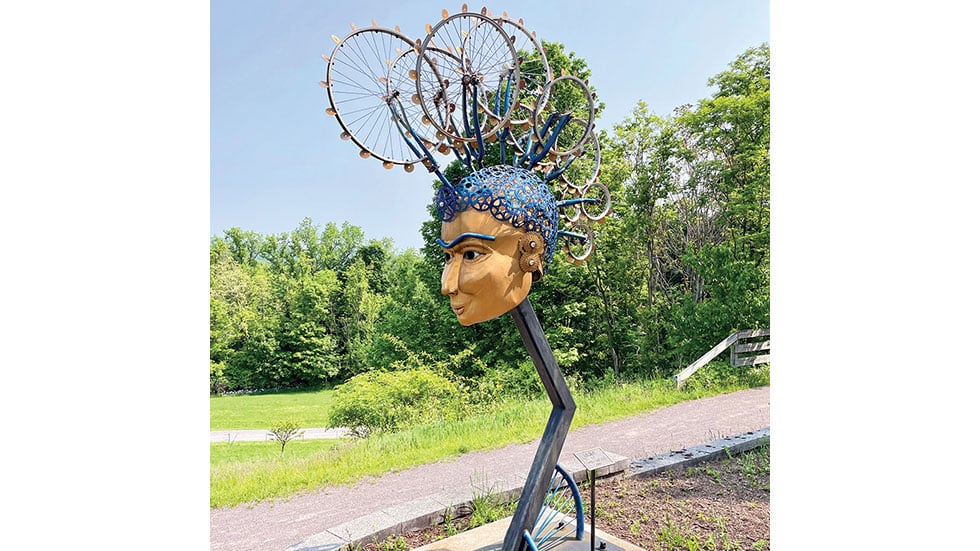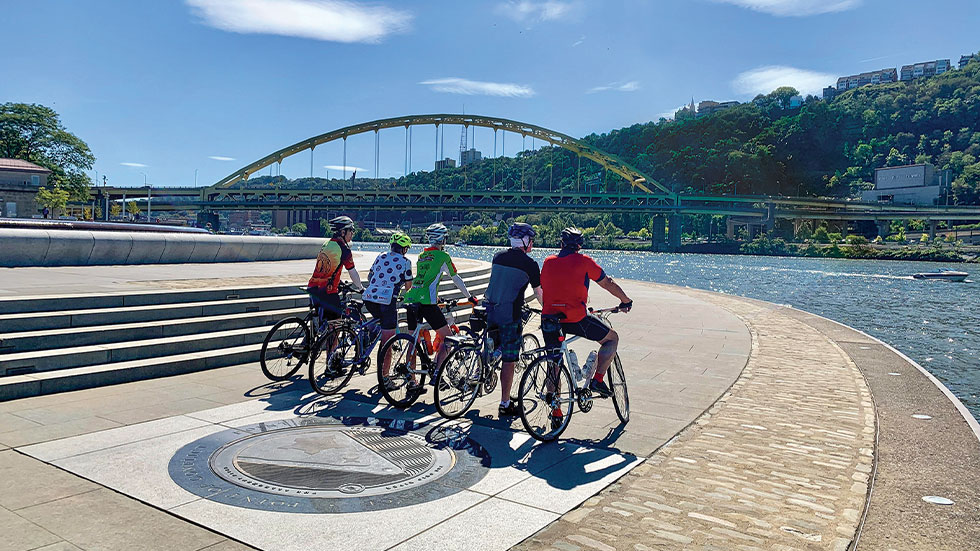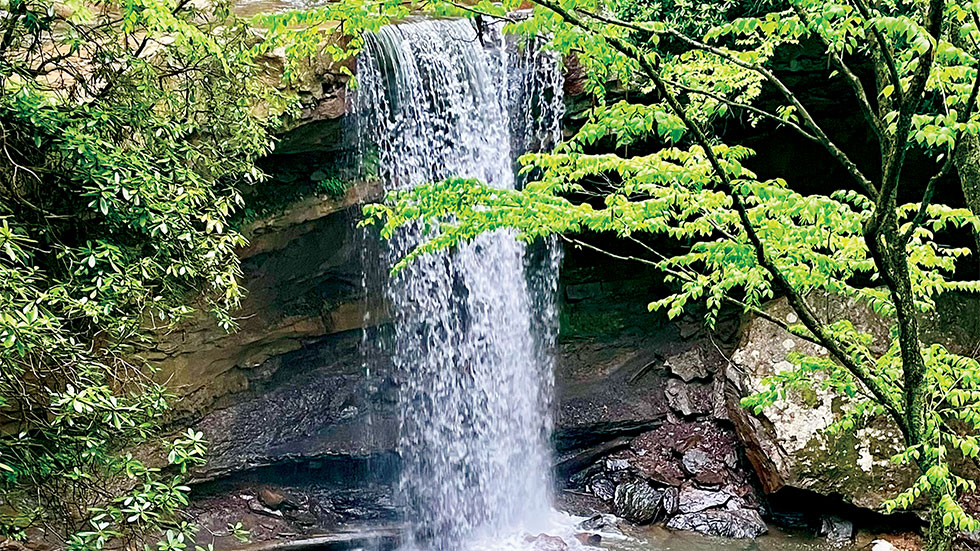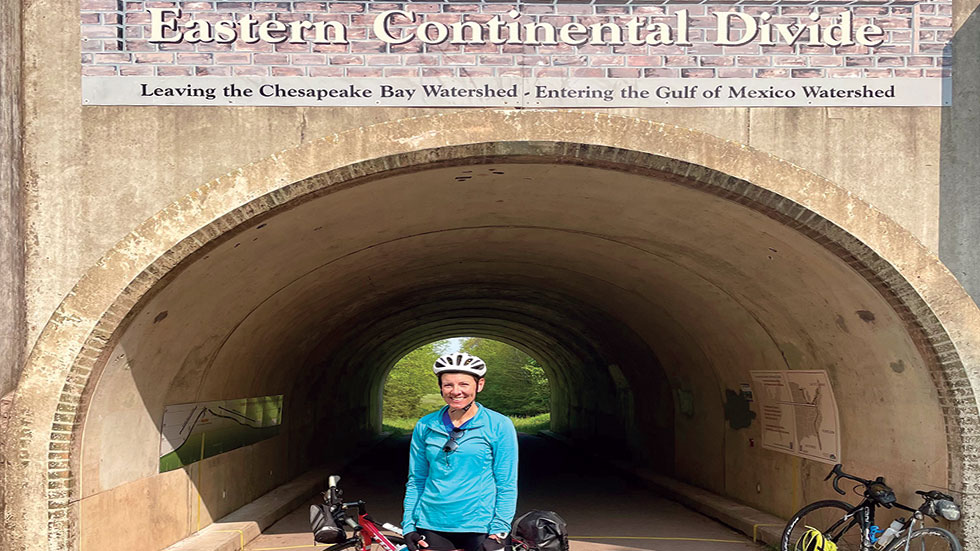Cycling the Mid-Atlantic’s 150-Mile Great Allegheny Passage
Taking a solo ride on the GAP Trail from Pittsburgh, Pennsylvania, to Cumberland, Maryland


The Great Allegheny Passage, which meanders between Cumberland, Maryland, and Pittsburgh, Pennsylvania, consistently ranks among the top rail trails in the US, earning accolades from such magazines as Bicycling and Outside. It took 35 years to complete the entire trail, but the wait was well worth it.
Today’s riders enjoy nearly 150 uninterrupted miles of bucolic landscapes, tumbling waterfalls, river views, railroad trestles and charming towns that implore cyclists to stop and stay awhile. It’s no wonder as many as 1.5 million cyclists took to this crushed limestone bike route in 2021, according to the Great Allegheny Passage Conservancy, a nonprofit created to protect and promote the trail. Nearly 200,000 of those were thru-riders like me, a casual cyclist with a hybrid bike and an eagerness to complete this bucket-list ride in one go.
 A sculpture made from recycled bicycle parts welcomes riders in Frostburg, Maryland; Photo by Erin Gifford
A sculpture made from recycled bicycle parts welcomes riders in Frostburg, Maryland; Photo by Erin Gifford
On this 10-year anniversary of the Great Allegheny Passage, I was inspired to reflect on the rise and fall of the railroads—notably the Western Maryland Railway and the Pittsburgh and Lake Erie Railroad— whose rail lines were transformed into this route, and the work that led to its creation across miles of abandoned tracks.
EARLY BEGINNINGS
The history of the Great Allegheny Passage (also called the GAP Trail) begins in June 1973 when George Leilich, vice president of the Western Maryland Railway, testified before the Interstate Commerce Commission that this dwindling rail corridor could be transformed into a “nature and bicycle pathway.” Some five years later, the Western Pennsylvania Conservancy purchased land use rights to 27 miles of sidelined railroad tracks. That same year, the first 9 miles of trail, which cut across Ohiopyle State Park, began to take shape, ultimately reaching completion and opening to the public in 1986.
As trail use grew, so did the enthusiasm to build more miles of the GAP Trail. The final stretch, a 9-mile section between West Homestead and Pittsburgh, opened in 2013, enabling a 148.8-mile thru-ride between Cumberland and Pittsburgh. Its completion helped turn struggling rail towns into flourishing trail towns.
 Cyclists prepare to set off at Point State Park in Pittsburgh; Photo courtesy of GAP Conservancy
Cyclists prepare to set off at Point State Park in Pittsburgh; Photo courtesy of GAP Conservancy
A SCENIC THRU-RIDE
I began my ride on a gray, cloudy day. I was excited, but I was also a bundle of nerves. This was my first multiday bike ride, and I was pushing off on my own. You can begin a thru-ride in either direction, but I opted to start at the rail trail’s western terminus at Pittsburgh’s Point State Park, which sits at the confluence of the Ohio, Allegheny and Monongahela rivers.
I slowly pedaled my pannier-laden bicycle, toting my tent, sleeping bag, clothes and toiletries along the rail trail, which follows the Youghiogheny River for 70 miles. The urban sprawl faded into the background, as did my nerves, with each well-shaded and mostly flat mile.
By the time I reached the GAP Trail Campground in West Newton (mile marker 114.1), I’d covered 35 miles and was biking across Pennsylvania’s wooded Laurel Highlands region. The campground greeted me with outdoor showers, plentiful outlets for charging phones and e-bikes—as well as the promise of morning coffee.
 Many cyclists detour for 30-foot-tall Cucumber Falls at Ohiopyle State Park; Photo by Erin Gifford
Many cyclists detour for 30-foot-tall Cucumber Falls at Ohiopyle State Park; Photo by Erin Gifford
RAINY RIDING
The next day would be my longest cycling day, requiring me to log more than 50 miles. It was also shaping up to be nearly a full day of rain. It was off and on, but as my soaked sneakers can attest, this was no sprinkle or drizzle. As I reached Connellsville (mile marker 88.8), a town whose economy was once fueled by coal and coke (coal residue), my rain jacket was being tested by pelting rain.
In Ohiopyle (mile marker 71.9) —a tiny trail town with 37 residents best known as a whitewater rafting destination—coffee shops, restaurants, guest houses and ice cream stands beckoned steps from the bike path.
I’d hoped to explore scenic Ohiopyle State Park, one of the largest state parks in Pennsylvania, which stuns with 14 miles of the Youghiogheny River Gorge and nearly 80 miles of hiking trails. The hiking trails were a mess from the rain, though, so I detoured to 30-foot-tall Cucumber Falls, one of the park’s jewels.
 Cyclists can enjoy a warm breakfast at Yoder’s Guest House in Meyersdale, Pennsylvania; Photo by Erin Gifford
Cyclists can enjoy a warm breakfast at Yoder’s Guest House in Meyersdale, Pennsylvania; Photo by Erin Gifford
FOOD AND FRIENDS
After spending the night at a campground in Confluence (mile marker 61.6), I was in no rush. The sun had returned, and I had fewer miles to tackle. I placed my order at Mitch’s Fuel & Food—fluffy pancakes, eggs, bacon and coffee—where I was greeted by a band of eight cyclists from a West Virginia-based cycling group. Our mutual interest in cycling and the GAP Trail fueled a flowing conversation.
I took my final sips of coffee and pushed on, cycling under a canopy of trees and warm sunshine. I soon reached the Salisbury Viaduct, one of the trail’s highlights. This 1,908-foot-long steel trestle bridge was an engineering achievement when it was built in 1911.
By the time I reached Yoder’s Guest House, a historic mansion-turned-inn in Meyersdale (mile marker 31.9), I was ready for the comforts of home. The covered porch was inviting, and an afternoon nap was on the agenda. The next morning, a heavenly aroma of house-blend coffee wafted up to my third-floor guest room.
 The author, Erin Gifford, at the Eastern Continental Divide, which marks the high point of the trail; Photo by Erin Gifford
The author, Erin Gifford, at the Eastern Continental Divide, which marks the high point of the trail; Photo by Erin Gifford
On my final day on the trail, I reached the Eastern Continental Divide within the first 10 miles. From this point, water flows east to the Atlantic Ocean and west to the Gulf of Mexico. It’s also all downhill from here to Cumberland.
Over the last miles, I reflected on the ride and the welcoming cyclists I met along the way. Over four days, I chatted with cyclists from all over—Seattle, Cleveland, Miami. I was alone but never truly alone. That’s the spirit of the Great Allegheny Passage.
